Simplifying speaker engagement in pharma: A holistic approach
Relationships with Speaker Bureau faculty are among the most important that a biopharmaceutical company nurtures. These relationships often span multiple teams across different program channels and can thrive for many years. The goal of creating a unified, simple, best-in-class engagement experience can be both challenging and elusive. Let’s look at a reimagined approach to HCP Speaker engagement that surpasses the conventional focus on training and makes the most of the multifaceted nature of a Speaker Bureau.
The Speaker’s Perspective
What do Speakers really want? A 2020 survey of 85 HCP Speakers in dermatology revealed that simplicity/efficiency (81%) was the most important aspect of a relationship with Industry partners, followed by reliability (73%), consistency (71%), predictability (61%), and meaningful content (61%).
These insights lay the foundation for developing engagement strategies that resonate with Speakers on a deeper level. The goal is to create engagements that educate and acknowledge the Speakers’ contributions to the field and provide a simple process and mutual trust.
Why Is Speaker Engagement Challenging?
Speaker engagement in pharmaceuticals is a multilayered task spanning multiple teams and intertwining various elements from training and compliance to logistics and feedback. Often a single physician will be engaging simultaneously with Medical Science Liaisons (MSLs), Thought Leader Liaisons (TLLs), a sales team, marketing, and logistics providers. This highlights evolving needs in Speaker engagement. From the company’s perspective, this becomes an exercise of juggling numerous “cooks in the kitchen” from nomination workflows to post-program feedback, and it becomes crucial to maintain cohesion throughout this process.
Mapping the Engagement Journey
The journey to simplifying Speaker engagement starts with a comprehensive map of the process. By dissecting each step from invitations and training to program management and ongoing engagement, companies can identify critical areas for improvement. Consider creating a simple grid that maps out the main steps in your work stream with the activities, touch points, questions, and challenges that your Speakers will experience. This methodical approach brings to light opportunities for streamlining the process without losing its essence. You can access an easy-to-use engagement planner slide template HERE.
Addressing Common Pain Points
Budget limitations, intricate compliance considerations, and stakeholder alignment are common challenges in Speaker engagement. When considering these pain points, it’s important to advocate for a balanced approach that navigates these constraints while maintaining the integrity of the Speaker’s experience. With this tension between a need to accomplish more but with less budget, technology solutions are in even higher demand.
Leveraging Technology for Enhanced Engagement
Increasingly, teams are ready to embrace the transformative role of technology in Speaker engagement. Much Speaker technology is designed primarily around meetings and event logistics, but increasingly it’s important for these platforms to become comprehensive communication, compliance, engagement, and reporting tools. During Informa’s 2023 Digital Week, the Speaker Bureau strategy expert, Michael Verlotta, explained, “What can we do to make (the Speaker) experience really a positive experience? It really starts with a Speaker portal. That portal needs to be comprehensive. It needs to be intuitive, and it really needs to be one-stop shopping for the Speakers. They don’t have time to be going to multiple different places.”
There is an increasing need for Speaker engagement technology to accomplish more tasks. This can create a situation where teams add various new systems to complete new tasks such as a CRM, an email tool, an event logistics platform, a training system, and another system for managing virtual events. It can become overly complex quickly. Ashley Kamil, head of Speaker Bureau at ClinicalMind, adds, “Simplicity is really the next frontier. The whole philosophy behind our CMGO technology is this shift toward offering a wide range of features but with a unified experience for Speakers, a unified experience for client teams, and a single pool of data for compliance and analysis. It’s a game-changer.”
Be clear, be confident and don’t overthink it. The beauty of your story is that it’s going to continue to evolve and your site can evolve with it. Your goal should be to make it feel right for right now. Later will take care of itself. It always does.
Example: Enhancing the Journey with Asynchronous Training
One way to leverage technology to offer an enhanced experience for Speakers is using asynchronous training. While in-person training has a number of benefits, asynchronous (e.g., online, on-demand) training can be used as follows:
To offer online training for compliance and logistics updates, using in-person time to focus on science, content, and program delivery
To provide alternative options for Speakers who cannot travel
To simplify minor content updates
To reserve in-person training for major label updates or larger shifts in content
Moreover, when Speakers connect to your brand through a comprehensive Speaker management platform, the same familiar system used to administer training can be used to facilitate communications and updates, gather survey feedback, facilitate group discussions, handle the contracting process, and manage program logistics. This process allows program managers to design a comprehensive engagement plan without having to jump from system to system.
Final Thoughts: The Holistic View
The vision for the future is a holistic view of Speaker engagement. It’s about understanding and addressing the needs of Speakers, simplifying company processes where they make the most sense, and leveraging technology to enhance the overall experience. By doing so, you can streamline Speaker Bureau management and create more impactful and satisfying engagements for expert HCP Speakers.

